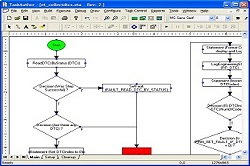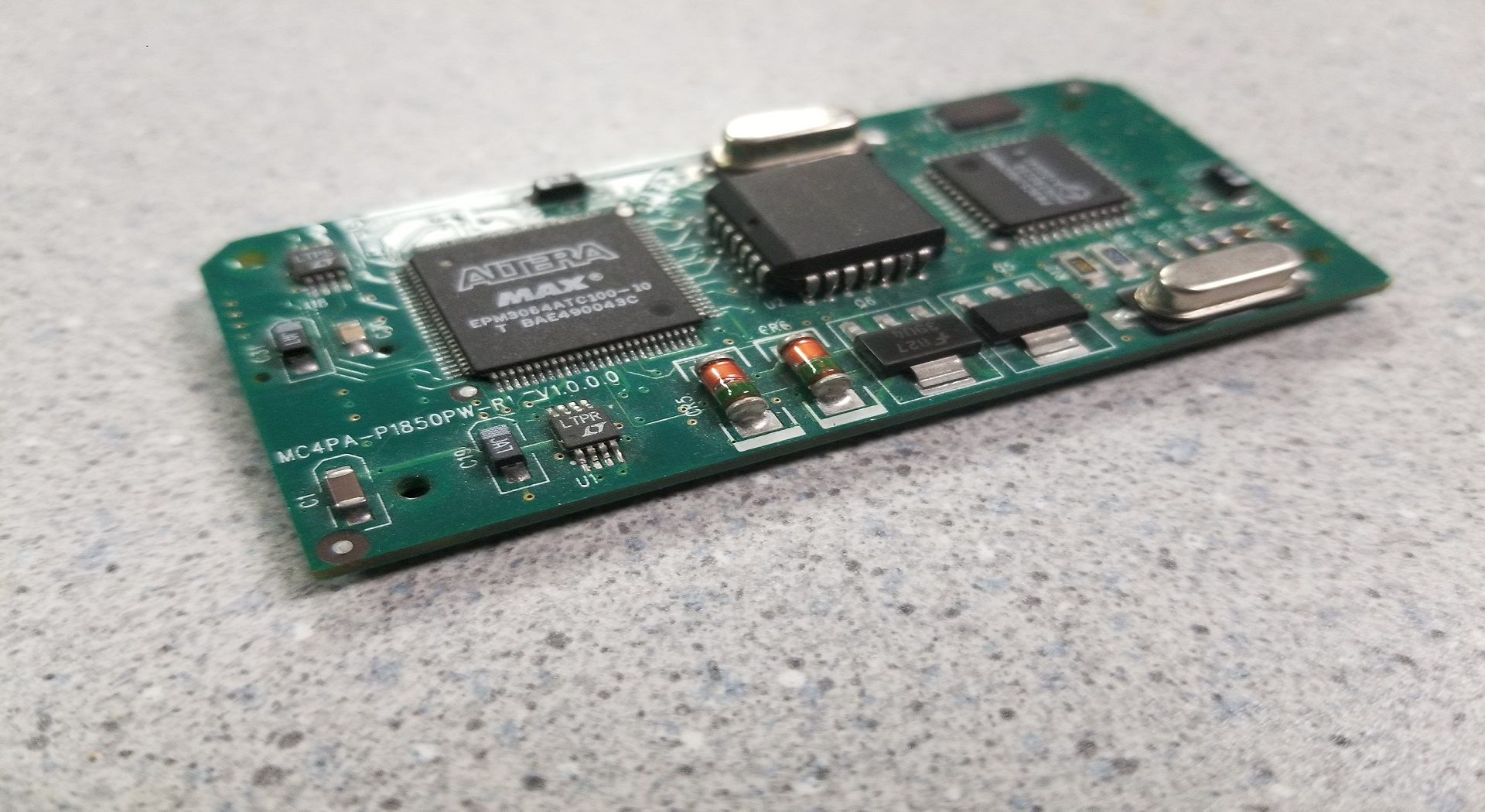We have a solution for you.
Automotive infotainment and telematics systems are complex systems with multiple vehicle network connections, multiple external sources (DVD, CD, MP3, satellite and terrestrial radio), and multiple functions (navigation, video, audio, and cell). Validation test cases have expanded to hundreds per module and system integration is becoming more difficult. Suppliers of telematics and infotainment components are facing reduced time to market, personnel shortages, and cost constraints while meeting increased product quality targets. EnGenius can help you meet these challenges through in-house or outsourced embedded software validation services.
You want proof? We have it.
EnGeniusTEST
The EnGenius software validation process is based
on EnGeniusTEST. The EnGeniusTEST platform, built on
National Instruments TestStand®, provides a highly capable
test development and execution platform that provides
a powerful set of tools that can be applied to a broad
 range of test applications from control modules to
telematics to infotainment. Tests developed in EnGeniusTEST
integrate network messages with analog and digital I/O
and other data acquisition hardware to effectively and
repeatably run test cases in a "black box" test environment
achieving up to 90% reduction in test time over manual
test case execution with the added benefit of automated
data collection and results reporting. Reduced test
execution time allows multiple unattended back-to-back
runs of the suite of test cases that can reveal failures
that may not be captured in a single pass through the
test suite. When needed, EnGeniusTEST can integrate
with external high-fidelity real-time simulations of
sensors, actuators, and other items such as dynamic
engine simulations to provide time critical stimulus
and response to the module firmware.
range of test applications from control modules to
telematics to infotainment. Tests developed in EnGeniusTEST
integrate network messages with analog and digital I/O
and other data acquisition hardware to effectively and
repeatably run test cases in a "black box" test environment
achieving up to 90% reduction in test time over manual
test case execution with the added benefit of automated
data collection and results reporting. Reduced test
execution time allows multiple unattended back-to-back
runs of the suite of test cases that can reveal failures
that may not be captured in a single pass through the
test suite. When needed, EnGeniusTEST can integrate
with external high-fidelity real-time simulations of
sensors, actuators, and other items such as dynamic
engine simulations to provide time critical stimulus
and response to the module firmware.
EnGeniusTEST provides three levels of automated data collection:
- Raw Data: contains all transactions between the test article and the test system. This includes all network message traffic, analog and digital I/O, and test progress markers. Because this information can be quite large, EnGeniusTEST can be configured to capture only pre- and post-event data.
- Playback Data: contains the data the test system used for a pass/fail decision. This data can be displayed in several graphical formats or exported for use with other tools. The user interface and be "played back" in a manner similar to a DVD.
- History Data: contains information about the test that was executed including the test components that were executed along with their revision level and execution time, faults detected, and recorded data.
Combined, the breadth of test data captured provides all the information you need to analyze the operation of the test article performance under normal and failure conditions.
Test Case Definition
If test cases have not been defined, EnGenius can use your software requirements to define a suite of test cases that will you can use to validate your firmware.
Automated Test Development
Our team of software and test engineers can develop a test suite to execute your validation test cases. Just give us your requirements and test cases along with hardware to run your firmware and a load box and we will return a validation test suite and a copy of the runtime and development environments. Although EnGeniusTEST is our preferred development and runtime environment, we also support LabView®, TestStand®, C/C++, Visual Basic, and Vector implementations.
Validation Testing
Give us your requirements, test cases, and the target hardware and EnGenius will build a load box, implement the automatic tests to execute your test cases, execute the test cases, and provide you with validation test results that you can provide to your developers and customers. When we are done, you will receive the validation test suite, the load box, and a copy of the runtime and development environments that you can use to modify and execute the test suite.
Custom Load Box Design and Production
We design and develop custom load boxes to support software development and validation testing. The load boxes can be designed to support both manual and automatic operation. The following are examples of infotainment and telematics software validation projects that EnGenius has undertaken.
Test Setup
EnGeniusTEST was used as the test development and execution environment for these examples. The following test hardware configuration was used during testing.
- Agilent E4438C Signal Generator: Used to create analog and digital (HD) signals.
- HP 8903B Audio Analyzer
- Agilent 6642A Power Supply
- HP 6652A Power Supply
- Keithley 2700 DMM
- MOST (Media Oriented Systems Transport) OptoLyzer
- EnGenius MultiCom (CAN)
IBOC ( In-Band On-Channel ) Radio
The primary focus of the IBOC validation was to verify that the DUT conformed to functions defined in the requirements document. This included functions such as:
- Waveband change (FM and AM)
- Frequency Tune (Direct and relative)
- Seek and Scan
- Preset Store and Recall
- PTY (Program Type) Filtering: This defines the type of broadcast this station is using (i.e. Rock, News, Talk, Adult Contemporary, Jazz, etc.).
Additional tests included:
- Frequency sweeps within the AM and FM waveband;
- 1 KHz tone reproduction;
- HD Radio signals acquisition over the air or through the signal generator; and
- Radio text decode (artist name, song title, etc.).
One of the larger tests involved storing and retrieving presets for each of the supported driver keys. Each key had its own unique ID and could have its own list of preset stations. The test flow initialized the list of presets for each key, recalled the presets for each key, and verified that the module retained the proper list of presets.
SDARS ( Satellite Digital Audio Radio Service )
SDARS validation verified that the DUT conformed to functions defined in the requirements document. This included functions such as:
- Tuning Up/Down by channel number, preset number, or category number.
- Direct Tune to a channel.
- Verifying the list of supported categories (12 categories like, Pop, News, Entertainment, etc.)
- Verifying that all of the channels reported the correct channel names and category numbers (as defined by Sirius).
- Keithley 2700 DMM
- MOST (Media Oriented Systems Transport) OptoLyzer
- Preset Store/Recalls for each supported key
Network Gateway Testing
The CAN/MOST message gateway function supported by the DUT was continuously tested as a background task while other testing was conducted to ensure that this background function did not degrade when other functions were operating.
8 and 12 Channel Amplifier
Open or short conditions (VBatt or ground) were induced using an automated load box. The list of active DTCs was retrieved to verify that the amplifier was able to correctly detect the fault on a per speaker basis. A 1 KHz tone was input to the amplifier. Volume, fade, balance, mid level, treble, and bass levels were performed while the outputs from the amplifier were passed into the Keithley 2700 to verify the correct levels on a per speaker basis.
